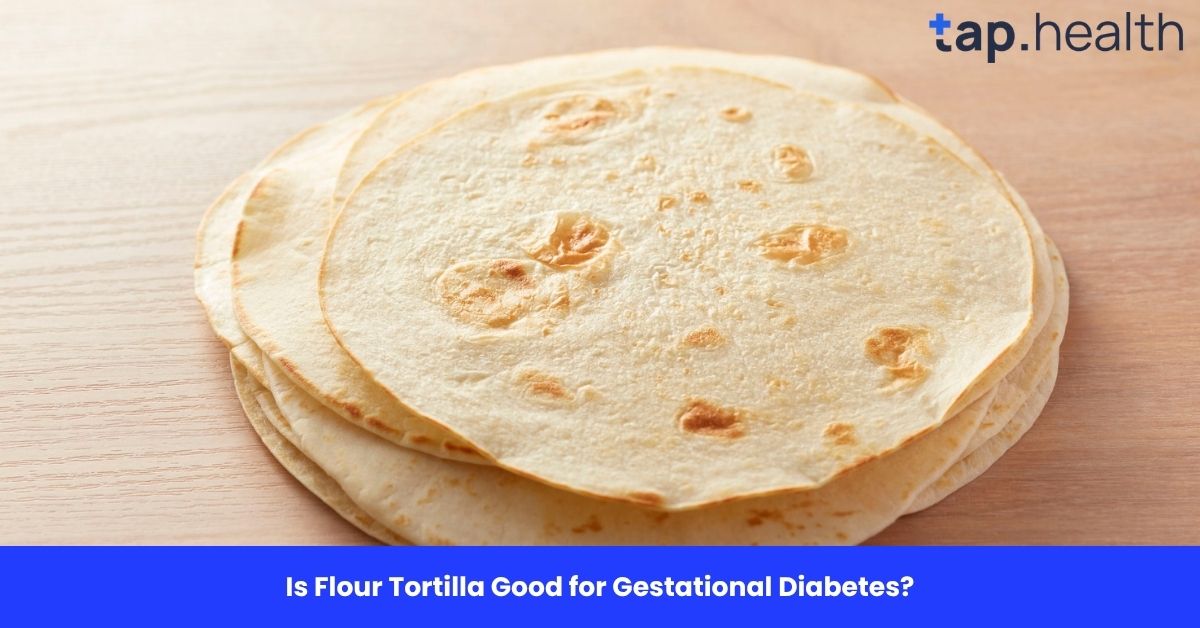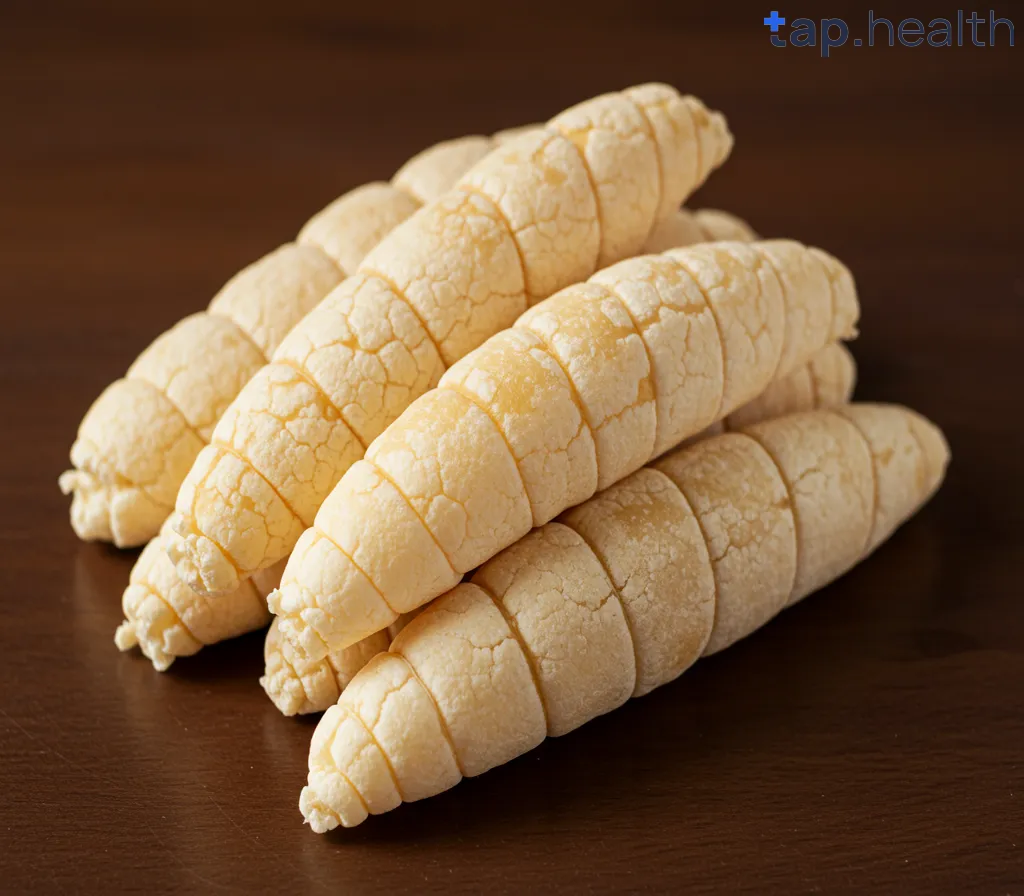Gestational diabetes is a condition that affects pregnant women and can impact both the mother and the baby. Managing blood sugar levels during pregnancy is crucial to ensure a healthy pregnancy and reduce complications. One of the common questions pregnant women with gestational diabetes have is whether they can enjoy certain foods, such as flour tortillas, without negatively affecting their blood sugar.
Flour tortillas are a popular food choice worldwide, often used as a base for wraps, tacos, or burritos. But are they suitable for someone with gestational diabetes? In this comprehensive guide, we will explore the nutritional value of flour tortillas, their effect on blood sugar, and whether they are a good choice for gestational diabetes. We’ll also provide helpful tips on making flour tortillas more diabetes-friendly.
What is Gestational Diabetes?
Before diving into the topic of flour tortillas, it’s essential to understand what gestational diabetes is and why managing blood sugar during pregnancy is so important.
Gestational diabetes occurs when a woman develops high blood sugar levels during pregnancy. This happens because the body is unable to produce enough insulin to meet the increased needs during pregnancy. While gestational diabetes usually goes away after childbirth, it can lead to complications such as high birth weight, preterm birth, or increased risk of developing Type 2 diabetes later in life for both the mother and child.
To manage gestational diabetes, it’s important to make healthy food choices that help regulate blood sugar levels. This is where the question about flour tortillas comes in. Let’s examine their nutritional content to understand their impact on blood sugar.
Nutritional Breakdown of Flour Tortillas
Flour tortillas are typically made from refined wheat flour, water, salt, and a fat source such as vegetable oil or lard. The nutritional profile of flour tortillas can vary based on size, ingredients, and brand. Here’s a general breakdown of a standard 8-inch flour tortilla:
- Calories: 140-200 kcal
- Carbohydrates: 25-30g
- Proteins: 3-5g
- Fats: 3-5g
- Fibre: 1-3g
- Sugars: 0-2g
- Sodium: 200-400mg
Carbohydrates and Blood Sugar
Carbohydrates are the primary nutrient that affects blood sugar levels. When you eat carbohydrates, they are broken down into glucose (sugar), which enters the bloodstream. In individuals with gestational diabetes, it’s crucial to manage carbohydrate intake to prevent spikes in blood sugar.
Flour tortillas, being made from refined flour, are a high-carb food. They have a moderate glycemic index (GI), meaning they can cause a moderate increase in blood sugar levels when consumed. The glycemic index of refined flour is around 70, which is considered high. Foods with a high GI can lead to rapid spikes in blood sugar, which is something women with gestational diabetes should avoid.
Fibre Content in Flour Tortillas
Flour tortillas typically contain a low amount of fibre, which is essential for blood sugar control. Fibre helps slow down the digestion of carbohydrates and reduces the speed at which sugar enters the bloodstream. Unfortunately, most traditional flour tortillas don’t provide much fibre, making them less ideal for blood sugar management. However, whole-wheat tortillas or tortillas made from other whole grains can be better alternatives due to their higher fibre content.
Is Flour Tortilla Safe for Gestational Diabetes?
Flour tortillas can be part of a balanced diet for gestational diabetes, but moderation is key. Due to their high carbohydrate content, consuming them in large quantities can cause blood sugar spikes, which is not ideal for someone managing gestational diabetes. However, in small amounts, they can be enjoyed as part of a meal that includes protein, healthy fats, and vegetables to help balance blood sugar levels.
Portion Control is Crucial
When consuming flour tortillas, portion control is extremely important. The typical serving size for a flour tortilla is one 8-inch tortilla. However, eating two or more tortillas at once can quickly add up to a significant amount of carbohydrates, which may raise blood sugar levels.
Pairing with Protein and Vegetables
To make flour tortillas more suitable for someone with gestational diabetes, consider pairing them with protein and vegetables. Protein and fibre help slow down the absorption of carbohydrates and keep blood sugar levels stable. For example, a flour tortilla with grilled chicken, avocado, and leafy greens can make a balanced meal that’s less likely to cause blood sugar spikes.
Read this : How Many Calories in a Flour Tortilla?
Alternatives to Flour Tortillas for Gestational Diabetes
If you want to enjoy the same convenience and flavour of a tortilla but with a healthier twist, there are several alternatives to consider. These alternatives can help lower the glycemic impact of your meal while still providing a delicious base for wraps and tacos.
1. Whole-Wheat Tortillas
Whole-wheat tortillas are a great alternative to traditional flour tortillas. They contain more fibre and nutrients, which help slow the absorption of carbohydrates and improve blood sugar control. Whole-wheat tortillas have a lower glycemic index compared to regular flour tortillas, making them a better choice for individuals with gestational diabetes.
2. Low-Carb or High-Fibre Tortillas
There are several brands that offer low-carb or high-fibre tortillas, specifically designed for people with diabetes or those looking to manage their carb intake. These tortillas often contain additional fibre from ingredients like flaxseed, chia, or psyllium husk, which helps slow down sugar absorption.
3. Lettuce Wraps
For a carb-free alternative, consider using large lettuce leaves as wraps. They provide a crunchy, refreshing base for filling ingredients like grilled chicken, vegetables, and cheese. Lettuce wraps are low in carbs and high in fibre, making them a great option for blood sugar control.
4. Cauliflower Tortillas
Another trendy alternative is cauliflower tortillas. These are made from cauliflower, egg, and cheese, offering a low-carb, gluten-free option for people with gestational diabetes. They are higher in fibre and lower in carbs compared to traditional flour tortillas, making them a great choice for blood sugar management.
How to Make Flour Tortillas More Diabetes-Friendly
If you’re set on using flour tortillas but want to make them healthier for gestational diabetes, here are some tips to modify your tortilla-based meals:
1. Choose Whole-Grain or High-Fibre Tortillas
As mentioned earlier, choosing whole-wheat tortillas or tortillas with added fibre can improve blood sugar control. These options are slower to digest and provide more nutrients than regular flour tortillas.
2. Limit Portion Size
If you’re going to eat a flour tortilla, try to limit your portion size. Instead of eating a large tortilla, consider using a smaller 6-inch tortilla, which has fewer carbohydrates.
3. Balance with Protein and Vegetables
Pair your tortilla with protein-rich foods such as grilled chicken, fish, or tofu, along with non-starchy vegetables like spinach, tomatoes, or bell peppers. This combination will help balance your meal and prevent a rapid rise in blood sugar.
4. Avoid Processed Fillings
While tortillas are versatile, it’s important to choose healthy fillings. Avoid highly processed meats like sausages, bacon, or fast food fillings that are high in fat and sodium. Instead, opt for lean proteins and fresh vegetables to make your meal more nutritious.
How Does Gestational Diabetes Affect Blood Sugar?
Gestational diabetes can cause blood sugar levels to rise higher than normal, which can lead to complications for both the mother and baby. High blood sugar can increase the risk of preterm birth, high birth weight, and low blood sugar in the baby after birth. Effective blood sugar management through a balanced diet, exercise, and regular monitoring is crucial in preventing these risks.
Frequently Asked Questions (FAQs) on Is Flour Tortilla Good for Gestational Diabetes?
1. Can I Have Flour Tortillas If I Have Gestational Diabetes?
Yes, you can have flour tortillas if you have gestational diabetes, but it’s important to eat them in moderation and pair them with healthy ingredients like lean protein and vegetables to balance blood sugar levels.
2. Are Whole-Wheat Tortillas Better for Gestational Diabetes?
Yes, whole-wheat tortillas are a better option for gestational diabetes because they contain more fibre, which helps slow the absorption of carbohydrates and improve blood sugar control.
3. Can I Use Cauliflower Tortillas for Gestational Diabetes?
Yes, cauliflower tortillas are a great low-carb alternative for those with gestational diabetes. They are lower in carbohydrates and higher in fibre, making them an excellent choice for blood sugar control.
4. How Do I Choose the Right Tortilla for Gestational Diabetes?
Look for tortillas that are high in fibre, low in refined flour, and preferably made from whole grains. Opt for whole-wheat tortillas or those labelled low-carb or high-fibre to help manage blood sugar levels.
5. What Other Foods Should I Avoid with Gestational Diabetes?
In addition to managing tortilla consumption, it’s important to avoid foods that are high in refined sugars and carbs, such as sugary snacks, white bread, and processed foods. Focus on whole grains, lean proteins, and plenty of vegetables.
Conclusion
In conclusion, flour tortillas can be part of a healthy diet for gestational diabetes, but portion control and smart pairing with protein and vegetables are key. While traditional flour tortillas may cause blood sugar spikes due to their refined carbohydrate content, healthier alternatives like whole-wheat or low-carb tortillas are better options. Always aim to balance your meals with fibre, protein, and healthy fats to keep your blood sugar stable and ensure a healthy pregnancy.



